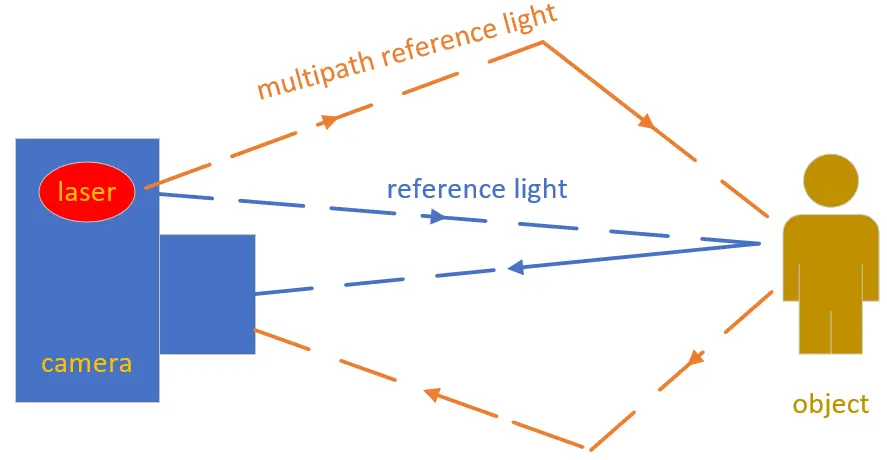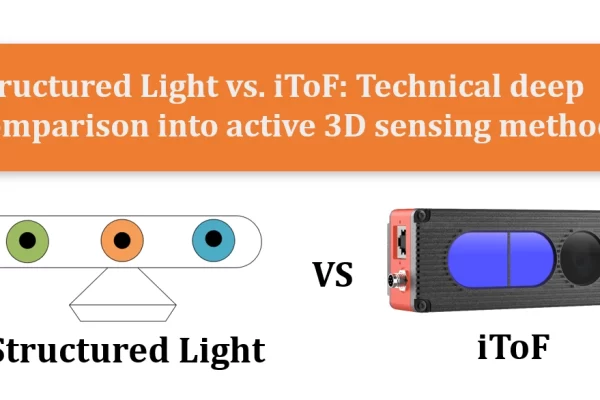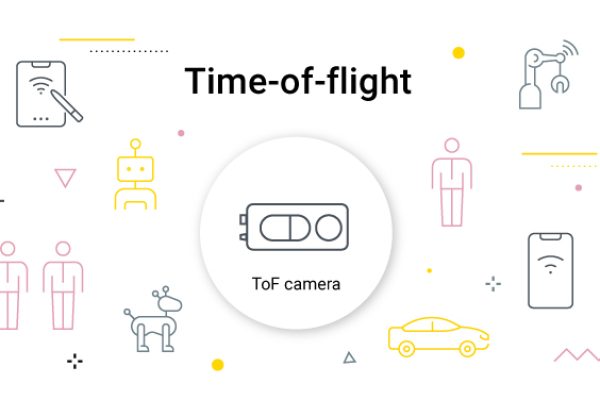Indirect Time-of-Flight (iToF) cameras work by emitting their own light source and calculating the distance based on the time that it takes to receive the reflected light back to the camera. However, the individual pixel receiving light source may be caused by one or more paths, a phenomenon known as multipath interference. In this article, let us learn about the content of multipath interference.

Table of Contents
What is multipath interference?
In theory, the individual pixel in the iToF camera receives light from one path, but in practice, the individual pixel receives light from multiple paths, the reason is that before the light reaches the sensor, the target object and other objects have different degrees of specular reflection or diffuse reflection, which will cause the measurement depth error, as shown in the diagram below:

Specular reflection vs. Diffuse reflection
Specular reflection is a regular reflection on a smooth surface where the angle of the reflected light is equal to the angle of the incident light. Diffuse reflection refers to the scattering of light on a rough surface, where the angle of reflection is unpredictable. As shown in the diagram below:

How does multipath interference occur?
Case 1: object with specular reflections
The scene in which the light source is emitted has an opaque object blocking the beam from returning to the sensor, resulting in distance calculation errors. As shown in the diagram below:

Case 2: translucent objects
The scene has a translucent object or surface, part of the emitted light source is reflected back on the front surface of the object, while the other part is reflected back to the sensor by the background object after passing through the object, thus guiding the depth measurement error. As shown in the diagram below:

Case 3: multi-surface or diffuse reflection
When there are multiple obstacles in the path of light, it produces a multi-surface reflection, which usually occurs in corners or depressions. Although the reflectivity is not high, the reflected light in all directions is relatively dense, which will affect the depth of the object boundary, resulting in distance calculation errors. As shown in the diagram below:

Case 4: lens flare or ghosting
Multipath interference is caused by scattering between the optical internal elements of the lens. As shown in the diagram below:

Minimize the influence of multipath interference
Multipath interference involves a combination of multiple optical paths, and it’s almost impossible to completely eliminate it. However, there are ways to minimize this to ensure maximum accuracy of the measurement.
Method 1: Remove other high-reflective objects from the scene.
Method 2: The camera should not be placed near any translucent object or corner;












